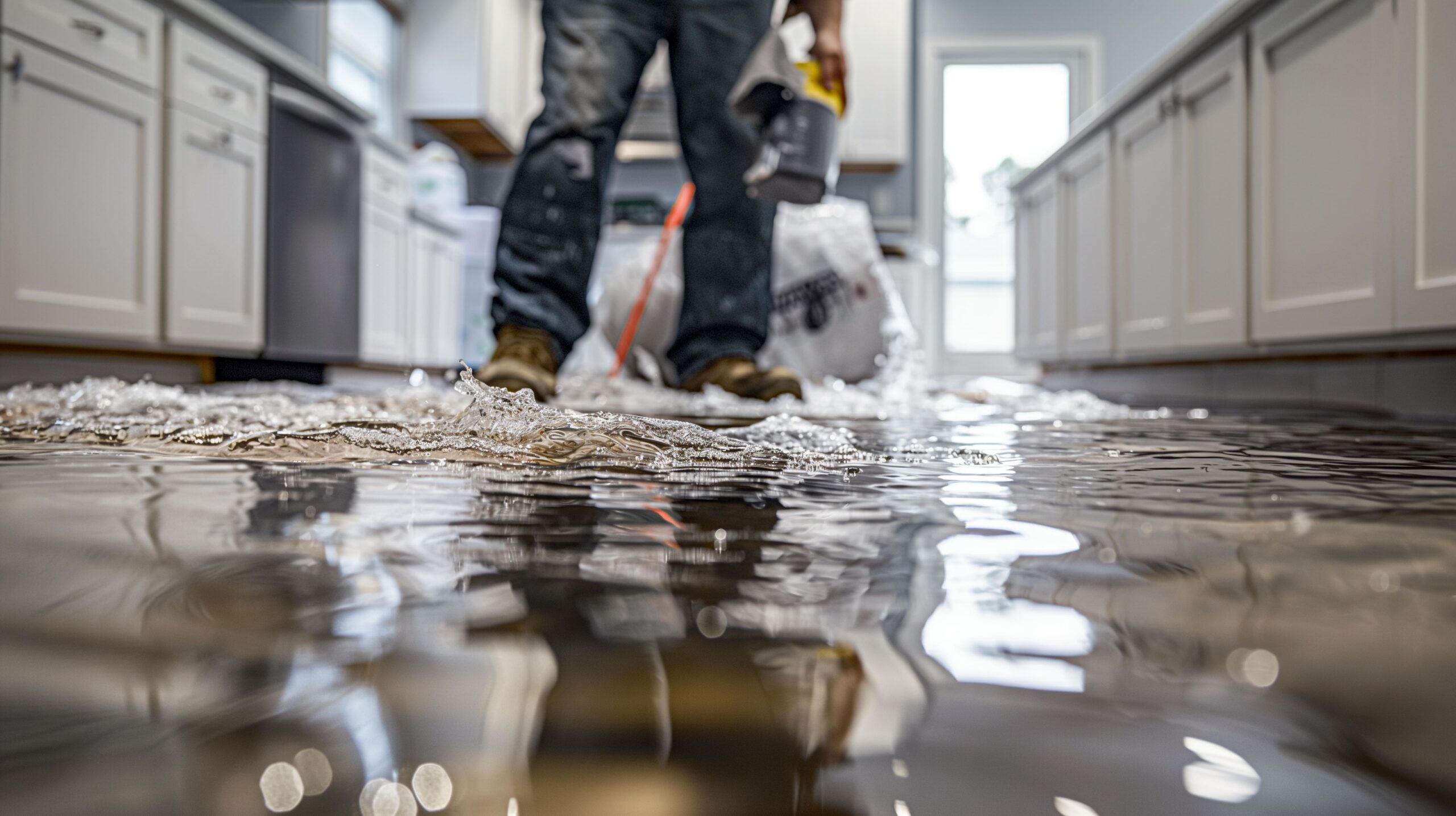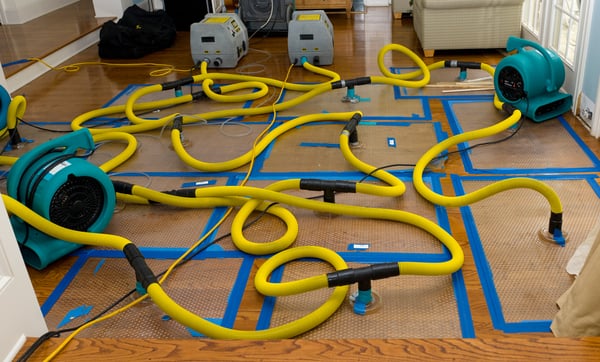When water damage strikes, the first few hours are critical. Emergency water mitigation services are designed to act fast, limiting the impact and preventing further damage to property and health. Whether caused by a burst pipe, heavy rainfall, or an appliance failure, uncontrolled water needs to be managed with precision and speed.
This article explains exactly what water mitigation services include during emergency response situations. Readers will gain a detailed understanding of the specific steps professionals take, what tools they use, how these services differ from water restoration, and why immediate action makes a difference.
Understanding Emergency Water Mitigation
Water mitigation focuses on minimizing damage and stabilizing the environment after water intrusion. It’s not the same as full restoration, which often comes later. Mitigation efforts are preventive and immediate.
Purpose and Scope of Mitigation Work
Mitigation is the first line of defense. It stops water from spreading, begins drying structural materials, and reduces the chance of long-term issues like mold or wood rot.
Key goals include:
- Extracting standing water quickly
- Preventing moisture from penetrating building materials
- Protecting personal property and salvageable materials
- Reducing the overall scope of restoration later
Steps Included in Emergency Water Mitigation
A coordinated emergency response covers multiple stages, from arrival to the final moisture check. Each step addresses an aspect of risk control.

Initial Assessment and Damage Containment
The process begins with a walkthrough to evaluate safety hazards and determine the extent of water damage.
Key activities include:
- Shutting off the water source (if still active)
- Classifying the water (clean, gray, or black) to plan cleanup needs
- Securing the area from electrical or structural hazards
- Establishing containment zones with plastic sheeting to stop cross-contamination
This phase is often completed within the first hour of arrival to prevent further property loss.
Water Extraction and Pump-Out Services
Once the area is secure, professionals remove all standing water using industrial-grade equipment.
Types of extraction tools:
- Submersible pumps for large volumes
- Wet vacuums for smaller or hard-to-reach areas
- Truck-mounted extractors for high-power suction
Speed is critical. The longer water sits, the deeper it seeps into porous materials like subflooring and drywall.
Moisture Detection and Mapping
Even after water is visible, moisture can remain hidden behind surfaces. Teams use digital tools to track it.
Moisture detection tools may include:
- Infrared thermal cameras
- Penetrating and non-penetrating moisture meters
- Hygrometers to monitor indoor humidity levels
Accurate mapping helps technicians plan efficient drying setups and monitor progress.
Structural Drying and Dehumidification
Drying the structure fully is one of the most critical parts of the process. Left damp, wood and drywall can deteriorate and become mold-prone.
Drying tools and methods used:
- Air movers to circulate dry air and speed evaporation
- Commercial-grade dehumidifiers to pull moisture from the air
- Wall cavity drying systems for behind-the-wall spaces
Drying typically continues for 3–5 days, depending on the materials and conditions.

Removal of Damaged Materials (When Necessary)
Not all materials can be salvaged after water exposure. Part of mitigation includes safely removing items that may pose contamination risks.
Items commonly removed include:
- Soaked insulation
- Swollen drywall
- Contaminated carpet and padding
- Warped particleboard cabinetry
This step protects the remaining structure and prepares the area for repair work later.
What Sets Emergency Mitigation Apart From Full Restoration
While they work closely together, mitigation and restoration serve different purposes. Understanding the difference helps homeowners know what to expect.
| Service Phase | Primary Focus | Timeframe | Techniques Used |
|---|---|---|---|
| Water Mitigation | Stop damage and stabilize structure | First 24–72 hours | Water removal, drying, containment |
| Water Restoration | Repair and rebuild affected materials | After drying is done | Reconstruction, refinishing |
Mitigation is proactive, urgent, and immediate. Restoration is the next step after the site is safe and dry.
Equipment Used During Emergency Water Mitigation
Technicians rely on specialized equipment not available in most households. This equipment enables precise drying and safe containment.
Key Tools and Their Functions
- Air Movers: Speed up evaporation on wet surfaces
- Dehumidifiers: Extract humidity from the air to lower moisture content
- Moisture Meters: Help monitor how wet structural materials are
- HEPA Air Scrubbers: Improve air quality and remove particles during drying
- Containment Barriers: Prevent the spread of moisture or contamination
Each tool plays a specific role in ensuring the space is dried efficiently and safely.
Common Challenges During Emergency Water Mitigation
Even with fast response, some obstacles complicate the process and require expert handling.
Hard-to-Reach Moisture Pockets
Water can seep under tile, into wall cavities, or beneath baseboards. Without full detection and drying, these pockets may lead to mold later.
Secondary Damage From Delayed Response
Waiting too long to call for help can lead to:
- Mold growth within 48 hours
- Structural swelling or buckling
- Electrical damage from moisture exposure
Professionals mitigate these risks by starting treatment immediately, often within hours of a call.
Contaminated Water Cleanup
Water from sewage backups (Category 3) or storm floods requires special precautions. These involve PPE, disinfection agents, and safe disposal of hazardous materials.
Common Questions
What happens first when emergency water mitigation begins?
The first priority is safety and containment. Crews assess the area, stop the water source, and begin removing standing water while identifying health hazards.
Is emergency water mitigation different from restoration?
Yes. Mitigation focuses on preventing further damage through drying, removal, and containment. Restoration comes later and handles repairs and rebuilding.
Can water mitigation prevent mold growth?
Yes, if done promptly. Removing water and thoroughly drying materials within 24–48 hours significantly reduces the risk of mold.
How long does emergency mitigation usually take?
The mitigation phase typically lasts 3 to 5 days, depending on the extent of water exposure and how quickly crews arrive.
Conclusion
Water mitigation services during an emergency response are structured act. Mitigation act fast and reduce the scope of long-term damage. These services include everything from moisture detection and water extraction to structural drying and removal of compromised materials. Timing is key—prompt mitigation can prevent costly repairs, mold growth, and structural weakening.
By understanding what these services cover, homeowners can make informed decisions in an emergency and feel more confident during the recovery process. Professional teams bring the tools, training, and experience needed to address every aspect of a water intrusion event safely and efficiently.
FAQs
What types of emergencies require water mitigation? Burst pipes, storm flooding, sewage backups, and appliance leaks often require mitigation. Any event where water affects structures or contents qualifies.
Is water mitigation covered by insurance? Insurance typically covers sudden, accidental water damage. Mitigation services are often part of the covered claim, but policies vary by provider.
Should flooring always be removed during mitigation? Only when it’s damaged beyond repair or if it’s trapping water underneath. Restoration teams assess each case based on moisture readings.
What if I wait a day or two before calling? Delays increase the risk of mold, bacteria, and structural problems. The sooner mitigation starts, the more likely materials can be salvaged.
Do I need to leave my home during mitigation? In most clean water cases, you can stay, especially if the affected area is contained. For contaminated water or major damage, temporary relocation may be recommended.
Reviewer: Matthew Moore brings over 15 years of experience in residential renovation marketing. The review provided helped shape this content to better connect with homeowners seeking reliable, high-quality restoration and home improvement services.